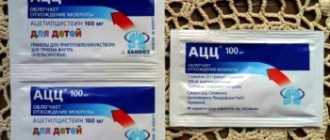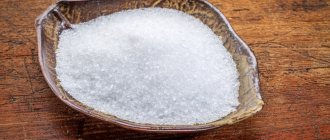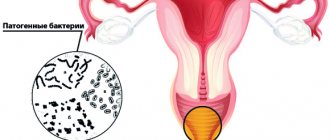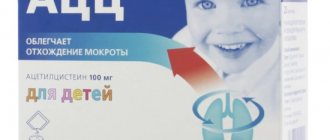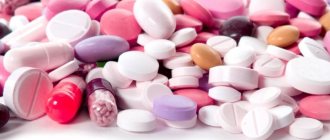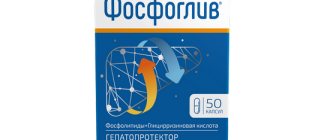Write a review
Reviews: 0
Manufacturers: Pharmstandard-Leksredstva (Russia)
Active ingredients
- Ascorbic acid
- Paracetamol
- Phenylephrine
- Pheniramine
Disease class
- Acute nasopharyngitis (runny nose)
- Acute sinusitis
- Influenza caused by an identified influenza virus
Clinical and pharmacological group
- Not indicated. See instructions
Pharmacological action
- Anti-inflammatory
- Antipyretic
- Analgesic (non-narcotic)
Pharmacological group
- Anilides in combinations
Powder for solution for oral administration Maxicold Rhino (Influnorm)
Instructions for medical use of the drug
Description of pharmacological action
Combined drug. Paracetamol is an analgesic, acting on the centers of pain and thermoregulation, and has an analgesic and antipyretic effect. Pheniramine is a blocker of H1-histamine receptors, reduces rhinorrhea and lacrimation, eliminates spastic phenomena. Phenylephrine is an adrenergic agonist with a moderate vasoconstrictor effect (stimulation of alpha-adrenergic receptors). Ascorbic acid is involved in the regulation of redox processes, carbohydrate metabolism, blood clotting, tissue regeneration, and in the synthesis of steroid hormones; increases the body's resistance to infections, reduces vascular permeability, reduces the need for vitamins B1, B2, A, E, folic acid, pantothenic acid. Improves the tolerability of paracetamol and prolongs its effect (associated with prolongation of T1/2).
Indications for use
Feverish syndrome (“colds” and infectious diseases). Pain syndrome (mild and moderate severity): arthralgia, myalgia, neuralgia, migraine, toothache and headache, algomenorrhea. Sinusitis, rhinorrhea (acute rhinitis, allergic rhinitis).
Release form
powder for the preparation of solution for oral administration; package (sachet) made of combined material 15 g cardboard pack 10; powder for the preparation of solution for oral administration; package (bag) of combined material 15 g cardboard box 500; powder for the preparation of solution for oral administration; package (sachet) made of combined material 15 g cardboard pack 5; powder for the preparation of solution for oral administration; package (sachet) made of combined material 15 g cardboard pack 10;
Pharmacodynamics
Combined drug. Paracetamol is a non-narcotic analgesic, acting on the centers of pain and thermoregulation, and has an analgesic and antipyretic effect. Pheniramine is a blocker of H1-histamine receptors, reduces rhinorrhea and lacrimation, eliminates spastic phenomena. Phenylephrine is an adrenergic agonist with a moderate vasoconstrictor effect (stimulation of alpha1-adrenergic receptors). Ascorbic acid is involved in the regulation of redox processes, carbohydrate metabolism, blood clotting, tissue regeneration, and in the synthesis of steroid hormones; increases the body's resistance to infections, reduces vascular permeability, reduces the need for vitamins B1, B2, A, E, folic acid, pantothenic acid. Improves the tolerability of paracetamol and prolongs its effect (associated with prolongation of T1/2).
Use during pregnancy
The drug should be used with caution during pregnancy and lactation (breastfeeding).
Use for renal impairment
The drug should be used with caution in case of renal or liver failure. The drug is contraindicated for use in cases of severe renal impairment.
Contraindications for use
Hypersensitivity; portal hypertension; alcoholism; renal failure; pregnancy (I and III trimesters), lactation period; deficiency of glucose-6-phosphate dehydrogenase.
Side effects
Allergic reactions (skin rash, itching, urticaria, angioedema), nausea, epigastric pain; anemia, thrombocytopenia, agranulocytosis. Increased excitability, dizziness, increased blood pressure, difficulty falling asleep. Mydriasis, accommodation paresis, increased intraocular pressure, dry mouth; urinary retention. With long-term use in large doses - hepatotoxic effect, hemolytic anemia, aplastic anemia, methemoglobinemia, pancytopenia; nephrotoxicity (renal colic, glycosuria, interstitial nephritis, papillary necrosis).
Directions for use and doses
Inside, 1 packet is dissolved in 200 ml of water, 4 times a day.
Overdose
Symptoms (due to paracetamol): pale skin, decreased appetite, nausea, vomiting; hepatonecrosis (the severity of necrosis due to intoxication directly depends on the degree of overdose). Toxic effects in adults are possible after taking more than 10–15 g of paracetamol: increased activity of “liver” transaminases, increased prothrombin time (12–48 hours after administration); a detailed clinical picture of liver damage appears after 1–6 days. Rarely, liver failure develops rapidly and can be complicated by renal failure (tubular necrosis). Treatment: administration of SH-group donors and precursors for the synthesis of glutathione - methionine 8-9 hours after an overdose and N-acetylcysteine after 12 hours. The need for additional therapeutic measures (further administration of methionine, intravenous administration of N-acetylcysteine) is determined depending on on the concentration of paracetamol in the blood, as well as on the time elapsed after taking it.
Interactions with other drugs
Enhances the effects of MAO inhibitors, sedatives, ethanol. Ethanol enhances the sedative effect of antihistamines. Antidepressants, antiparkinsonian and antipsychotic drugs, phenothiazine derivatives increase the risk of developing urinary retention, dry mouth, and constipation. GCS increase the risk of developing increased intraocular pressure. Paracetamol reduces the effectiveness of uricosuric drugs and increases the effectiveness of indirect anticoagulants. Tricyclic antidepressants enhance their sympathomimetic effect; simultaneous administration of halothane increases the risk of developing ventricular arrhythmia. Reduces the hypotensive effect of guanethidine, which in turn enhances the alpha-adrenergic stimulating activity of phenylephrine.
Special instructions for use
During the treatment period, it is necessary to refrain from drinking ethanol (possible development of hepatotoxic effects), driving vehicles and engaging in other potentially hazardous activities that require increased concentration and speed of psychomotor reactions.
Storage conditions
In a dry place, protected from light, at a temperature not exceeding 30 °C.
Best before date
24 months
ATX classification:
N Nervous system
N02 Analgesics
N02B Analgesics and antipyretics
N02BE Anilides
N02BE51 Paracetamol in combination with other drugs (excluding psycholeptics)
Features of application
The instructions for Maxicold Rhino note that paracetamol, which is part of it, can cause toxic damage to the liver. But the danger of this exists mainly in people who are prone to drinking alcohol. Therefore, it is unacceptable to combine the drug with alcoholic beverages.
It is important for patients with diabetes to exercise caution. After all, each sachet of the drug contains 13 g of sugar. Therefore, it is necessary to adjust the diet and insulin doses. In addition, this medicine may cause dizziness or decreased psychomotor speed. Therefore, you should be careful when driving a car or driving dangerous machinery. It is better to abstain from this altogether during treatment.
Similar drugs:
- Spasmalgon Tablets
- ARTRADOL (Artradol) Lyophilisate for the preparation of solution for injection
- Dicloberl N 75 (Dicloberl N 75) Solution for injection
- Next Oral tablets
- Nalbuphine Solution for injection
- Panoxen Oral tablets
- Katadolon Capsule
- Meloxicam Solution for intramuscular administration
- Optalgin Oral tablets
- Butadion Oral tablets
** The Drug Directory is intended for informational purposes only. For more complete information, please refer to the manufacturer's instructions. Do not self-medicate; Before starting to use Maxicold Rhino, you should consult a doctor. EUROLAB is not responsible for the consequences caused by the use of information posted on the portal. Any information on the site does not replace medical advice and cannot serve as a guarantee of the positive effect of the drug.
Are you interested in the drug Maxicold Rhino? Do you want to know more detailed information or do you need a doctor's examination? Or do you need an inspection? You can make an appointment with a doctor - the Euro lab is always at your service! The best doctors will examine you, advise you, provide the necessary assistance and make a diagnosis. You can also call a doctor at home . Euro lab clinic is open for you around the clock.
** Attention! The information presented in this medication guide is intended for medical professionals and should not be used as a basis for self-medication. The description of the drug Maxicold Rhino is provided for informational purposes and is not intended for prescribing treatment without the participation of a doctor. Patients need to consult a specialist!
If you are interested in any other drugs and medications, their descriptions and instructions for use, information about the composition and form of release, indications for use and side effects, methods of use, prices and reviews of drugs, or you have any other questions and suggestions - write to us, we will definitely try to help you.
Respiratory viral infections
During the cold season, it is easy to catch a cold. But more often than not, people suffer from viral infections, which are very contagious as they are transmitted by airborne droplets. This disease begins with nasal congestion, sore throat, and fever. The patient begins to have headaches, muscles and joints, weakness and malaise. Gradually the condition worsens, a cough appears. Without treatment, this pathology can cause complications.
This condition greatly affects a person’s performance, so many patients are looking for a way to recover faster. Usually, doctors prescribe a complex of medications for viral diseases, many of which are aimed only at relieving symptoms. But you can use one product for this - Maxicold Rhino. This drug will help alleviate the patient’s condition, relieve sore throat and nasal congestion. Moreover, you can purchase it without a doctor’s prescription.
Description
Powder for oral solution (lemon): yellow granular powder with a specific odor. The presence of white crystals and easily crumbling lumps is allowed. The powder is dissolved in 250 ml of hot water to form a light yellow opalescent solution with a characteristic lemon odor.
Powder for oral solution (orange): yellow granular powder with a specific odor. The presence of white crystals and easily crumbling lumps is allowed. The powder dissolves in 250 ml of hot water to form a light yellow opalescent solution with a characteristic orange odor.
Powder for oral solution (raspberry): granular powder from light pink to dark pink with a reddish tint and a specific odor. The presence of white crystals and easily crumbling lumps is allowed. The powder dissolves in 250 ml of hot water to form an opalescent pink solution with a characteristic raspberry odor.
Dosage form
powder for preparing a solution for oral administration (lemon, orange, raspberry).
Compound. One sachet contains:
active ingredients : paracetamol 325 mg, pheniramine maleate 20 mg, phenylephrine hydrochloride 10 mg, ascorbic acid 50 mg;
Excipients:
Powder for preparing an oral solution [orange]: citric acid (anhydrous citric acid) - 750.00 mg, malic acid - 7.50 mg, sucrose (sugar) - 13599.17 mg, titanium dioxide - 2.20 mg, sodium citrate (sodium citrate anhydrous) - 123.00 mg, orange flavor - 52.50 mg, quinoline yellow dye - 0.33 mg, calcium phosphate (tricalcium phosphate) - 60.00 mg, ethylcellulose - 0.30 mg;
Powder for preparing an oral solution [citric]: citric acid (anhydrous citric acid) - 750.00 mg, malic acid - 7.50 mg, sucrose (sugar) - 13599.17 mg, titanium dioxide - 2.20 mg, sodium citrate (sodium citrate anhydrous) - 123.00 mg, lemon flavor - 52.50 mg, quinoline yellow dye - 0.33 mg, calcium phosphate (tricalcium phosphate) - 60.00 mg, ethylcellulose - 0.30 mg;
Powder for preparing an oral solution [raspberry]: citric acid (anhydrous citric acid) - 750.00 mg, malic acid - 7.50 mg, sucrose (sugar) - 13599.17 mg, titanium dioxide - 2.20 mg, sodium citrate (sodium citrate anhydrous) - 123.00 mg, raspberry flavor - 52.50 mg, quinoline yellow dye - 0.083 mg, azorubine dye (acid red 2C) - 0.247 mg, calcium phosphate (tricalcium phosphate) - 60.00 mg , ethylcellulose - 0.30 mg.
Pharmacological properties
The combined drug has antipyretic, vasoconstrictor, analgesic and antiallergic effects. Paracetamol has an antipyretic and analgesic effect: it reduces the pain syndrome observed with “colds” - sore throat, headache, muscle and joint pain, and reduces high fever. Pheniramine has an antiallergic effect: eliminates swelling and hyperemia of the mucous membranes of the nasal cavity, nasopharynx and paranasal sinuses, reduces runny nose and lacrimation. Phenylephrine has a vasoconstrictor effect: it reduces swelling of the nasopharyngeal mucosa. Ascorbic acid (vitamin C) replenishes the increased need for vitamin C during colds and flu, especially in the initial stages of the disease; increases the body's resistance to infectious diseases. The combined action of pheniramine and phenylephrine leads to a reduction in nasal congestion and a significant improvement in nasal breathing.
